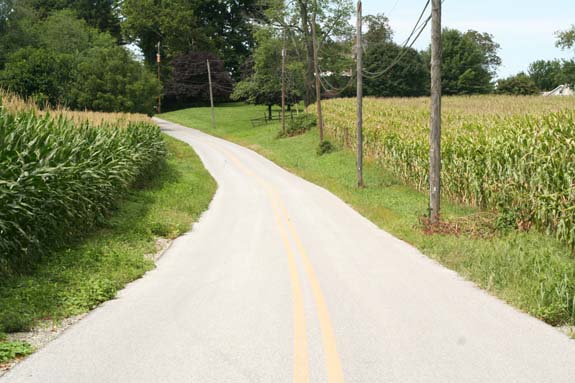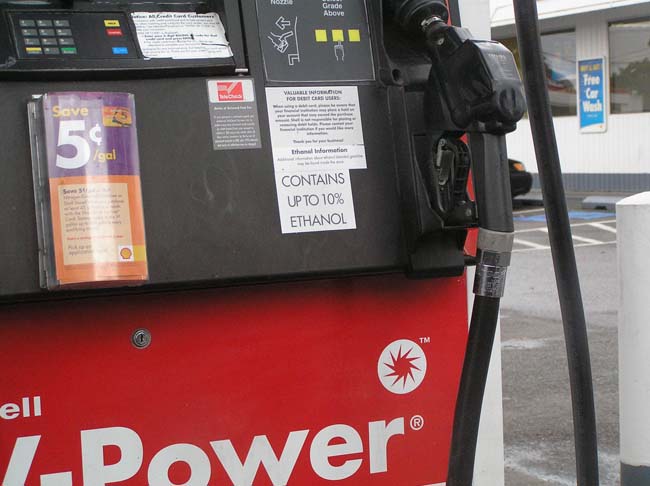
15 Nov Keystone Pipeline: Subsidy is the issue; eminent domain is the subsidy
Posted November 14, 2011 from Seattle, WA.
I’m running the tiny ad shown here opposing the Keystone Pipeline in the Seattle Times this Tuesday the 15th. It will be in the A-section. The ad is half the size of my normal ads as an experiment to see if less- is-more when it comes to text. In case the jpg is unreadable, the text reads:
Keystone Pipeline is unpatriotic
Some would subject Americans to the heartbreak and loss of eminent domain for a Canadian pipeline that will enable the destruction of the boreal forest while subsidizing ocean acidification & climate-forcing. –Ed Newbold Wildlife Artist
I’m trying to make a tiny contribution to changing the terms of the energy debate in this country to focus more on the issue of subsidy. In the ad I characterize the gift of Eminent Domain to Keystone as a “subsidy,”—which it certainly is and a massive one at that.
Armed with Eminent Domain, a company can purchase land that it would never be able to buy in a free market, and it can essentially call the price. The difference between what the property for the Keystone Pipeline would cost in a free market versus what it costs with eminent domain is the market value of the government subsidy we will be giving Keystone if the project is approved.
With new-route pipelines, unlike other business propositions, there is no middle ground. The US can either grant Keystone eminent domain or it can refuse, which stops the project in its tracks. When the only way to allow a project to proceed is to gift it with a subsidy, that in itself becomes a very strong argument for disallowing the project.
Eminent domain subsidy a common thread in ill-conceived projects & the destruction of ecosystems worldwide
A few years back a blockbuster movie (I’m 60 & the name isn’t coming to me) told the tale of indigenous folks fighting a huge dam project in a foreign world, one that brought to mind the Brazilian rain forest where indigenous tribespeople were fighting the same battle but losing it. In the movie the destructive project was stopped, quite implausibly, with violence. In real life it prevailed armed as it was with the legal power of eminent domain.
Whenever you see a cost-benefit analysis of a hydroelectric dam, you can mentally throw it in the trash. The cost of expropriating and destroying the fertile river bottom land that will be flooded is always calculated on the basis of eminent domain (unless the land is already owned by the dam-building agency). Obviously hydroelectric is here to stay: in the developed world the train has already left the station. In the developing world expect corruption and eminent domain to couple with a poor accounting of external costs—the loss of the most productive land around the river, the value of the ecosystem and it’s services, and value of free-flowing river—to be understated in all official analyses.
The damming of rivers and the theft of their water will be the subject of future battles. While the United States was involved with a major military project ostensibly about helping the country of Iraq get on its feet, it stood by with nary a peep as a US ally (Turkey) dammed and essentially stole the water from the rivers that are Iraq’s sole raison d’etre. In China millions are being relocated—eminent domain is not a question there—for the world’s biggest dam, the operation of which will create problems and ecosystem impoverishment for years to come. Here in this country, we have de-watered the two big rivers—the Colorado and the Rio Grande—which used to bring verdant life to Northern Mexico.
What’s wrong with Subsidy?
It’s disturbing to see the lack of alarm among the body politic over the issue of subsidy. “Subsidies may distort markets…” Wikipedia tells us, “…and can impose large economic costs.” People who see only the direct effects of a subsidy are missing the whole truth. As economist Henry Hazlitt writes,” The art of economics consists in looking not merely at the immediate but at the longer effects of any act or policy; it consists in tracing the consequences of that policy not merely for one group but for all groups.”

America is a nation with corn on both sides of every road, thanks to one big subsidy, the ethanol mandate and other subsidies
When people assign credit to the US for its robust economic success of the past 200 years, they unfortunately only rarely ascribe that success to a basic integrity in the pricing system: the United States has been a place where people knew more or less exactly what the cost of things were and therefore could act rationally in procuring (or not procuring) those things. That’s why we grew as an economic power.
In the former Soviet Union, industrial technocrats were constantly frustrated because they didn’t know the real cost of anything. Neither did anyone else. Bread was subsidized to the point that loaves of bread were often used as a temporary ball in spontaneous pickup games of soccer. Without a price system that carried cost-information with integrity, the Soviet Union crashed and burned.
Now in our attempts to achieve specific aims, in our generosity to so-called “job creators,” and sometimes with purely good intentions, we are slowly recreating the mess the Soviet Union lived under.
When we grant Keystone a huge subsidy to allow it to move oil-shale petroleum very cheaply to where large refineries and ports already exist, we turn that oil into a version of the Soviet loaf of bread.
Before this Canadian oil-shale oil ever gets to the pipeline, it is already vastly subsidized by another form of subsidy, the externalization of cost. Externalities are costs not borne by the producer, i.e., they are shifted to others. (Pollution is a classic externality. I own a factory that pollutes. I make all the money from the factory; you and everyone else breathes the pollution my factory creates, therefore you pay my external costs. Murder, Automobile crashes, and fracking that ruins a neighbor’s well-water are examples of externalities as the costs aren’t willingly born as part of a market transaction.)
The Canadian land ownership system virtually guarantees that the forest which is being destroyed by oil-shale development is underpriced. The water used in the process is going to be underpriced, the lifestyle of neighboring landowners, the value of the ecosystem and even the energy used in mining oil shale is all underpriced as a result of a system that allows externalities to go unrecognized, and places subsidies, hidden and otherwise, everywhere throughout the system.
Externalized costs are the most difficult, controversial and probably ultimately the most damaging form of subsidy. Sometimes nothing can be done about externalities, but an industry that is characterized by outsized and absurdly high external costs—such as Mountaintop Removal mining and Oil-shale development–should be precisely the industries we should make a special effort to NOT gift with subsidies.
A particularly grotesque form of subsidy: the Mandate
In the recent discussion of abolishing the ethanol subsidy, it was occasionally noted that the subsidy was more or less irrelevant to the industry since they were already the proud beneficiaries of a government mandate. Mandates disrupt the economy and force people to buy certain products regardless of their deisires. If my art business were subsidized, people might get, say, $5 off their taxes if they bought one of my prints. If I had a mandate, however, I’d be set: let’s say everyone who was remodeling their house would be required to buy one of my prints. What’s the name of your yacht-broker?
You can see I wouldn’t need the subsidy if I had the mandate! Ethanol has both, and both are hideous, but the mandate does far more damage to the economy and the environment than the subsidy. Anyone buying gas is required to buy a mixture of fuel including 10% ethanol. It’s a national disgrace that this is not a topic of daily discussion. Today 40% of our corn crop, which is by far our largest agricultural crop by acreage, is going to ethanol. It displaces at most 10% of our motor transport needs while shockingly it probably increases our overall output of Carbon. The increased Carbon pollution is caused by both the growing, processing and transporting of ethanol plus the massive displacement of food agriculture to other countries and particularly into the rain forest. The very large water use of ethanol processors is another problem that is concealed both by the mandate and the fact that water itself is subsidized and underpriced for large users in most of America.
The result of our ethanol policy combined with the European Union’s similar biofuel policy is falling rain forests around the world coupled with exploding food and land prices as food-producing agriculture is displayed out of the most productive land into standing forest and marginal land. This has resulted in loss of biodiversity and in the poorest countries of the world, direct starvation.
Sadly, environmental organizations have had and continue to have a checkered role in the continuing ethanol-mandate story. At the time of the big successful push for new ethanol legislation, circa 2003, when the Archer Daniels Midland Corporation and others launched their massive green-washing ad campaign “Think Green Go Yellow,” many environmental organizations including Environment Washington’s predecessor Washington Environmental Council were blandly pro-biofuel. Most have retreated to some degree but many continue to send mixed signals by stating support for so-caloled “cellulosic biofuels” which would do even more damage were they to be mandated. (see Scientific American April 2011 “Biofuel s’ False Promise.)
Mandates & subsidies for wind and solar are failing to make a positive impact
A recent story in the New York Times (Nov 11, 2011) detailed the massive subsidies going to solar and wind-energy projects. The story highlights a solar-project in California that will reap subsidies worth “almost as much as the entire $1.6 billion cost of the project.” The article noted that clean energy mandates removed almost all the risk from the project, making this similar to ethanol, where the mandate insures the job will get done and the subsidy just guarantees riches at the expense of the taxpayer for those who do it.
This style of solar project—solar panels spread over the desert—is reminiscent of ethanol it that it is land-hungry. The free market would help to evaluate its true costs by factoring in just what those land costs are, and would help to tell us if this project is really as eco-friendly as folks thought it was.
Indeed, this style of solar project may turn out to be a perfect example of what Todd Myers in his book of the same name calls “Eco-Fads.” When government picks and chooses technologies and then anoints them with subsidies and mandates, problems are sure to follow. Other technologies that may represent the real solution to the problem are starved of publicity and investment capital and must compete against subsidized product.
Similarly wind and biomass have been blessed and anointed. Here in Washington, there is now too much energy production for the grid, and wind operators are being asked to shut down. It’s unlikely we’d be in an overbuilt situation if wind investments had been responding to regular economic constraints and not been guaranteed all kinds of subsidies and taxpayer-supplied freebies.
Wind Farms have also sped the destruction of good unbroken sagebrush habitat and have speeded up the decline of birds like the Sage Grouse, Sage Sparrow, Sage Thrasher, Pygmy Rabbit and others.
Here in Seattle subsidies have led to a very bad outcome when Seattle Steam recently switched from burning relatively clean and very low-particulate-producing natural gas (I don’t love natural gas, but it sets the standard to beat, not the standard to fall short of) to waste wood which emits three times the CO2 and 1300 times the health-threatening small-particle particulate pollution. Wood was always going to be more expensive to operate with than natural gas for Seattle Steam, so the reason for the change was solely to respond to subsidy-incentives and perhaps to ride the eco-fad bandwagon of biomass for fleeting good publicity. Now the truth is coming out, however, as activists such as Duff Badgley and Mike Smith of Seattle are warning of the potentially serious health dangers of the switch and at the same time –rumor has it—the source of waste wood is proving unreliable.
Some subsidies for energy use are hidden, some aren’t, all are damaging
Subsidies are sprinkled heavily throughout the energy sector, some hidden, some in plain sight, and some hidden in plain sight. For example, according to the NYTimes article quoted, oil and gas producers got federal tax breaks of $2.7 billion in 2010.
It could be noted that subsidies for “locked-in” technologies, that is old and successful technologies that are already benefitting from billions of dollars of sunk investments, such as oil and gas, cars and roads, etc, are particularly harmful to the innovation function of the free market as these technologies are already “locked in” by virtue of existing infrastructure and even culture. Strengthening them makes it even harder for new innovative technologies to compete against them.
An example of that is a subsidy for a locked-in industry—trucking. This industry gets many subsidies, but among the more hidden is the fact that this industry doesn’t pay property tax, while it’s logical competitor, the railway, does. Trucks generally use more energy than railroads, all else being equal.
A similar hidden energy subsidy for buying gas and driving cars, as opposed to engaging in other forms of commercial activity is that gasoline in the state of Washington is sales-tax-free while most other commodities are subject to our sales tax. Many would be quick to point out that gasoline is taxed, and that Washington has among the highest gas taxes in the nation, but this point is irrelevant as the gas tax is a roadway user fee and gasoline is exempt from the sales tax. This is not a pro-tax position as I am not advocating a change in these laws that would be revenue positive. A level playing field coul be created by adding the sales tax to gasoline but lowering the sales tax rate, and this would promote efficiency in the overall economy.
If anyone is still reading thanks! ENDING Coming soon. –Ed Newbold



Natalie Calhoun Uzertader
Posted at 13:26h, 17 JanuaryProperty rights activists have always been well organized, and were energized by the Kelo Supreme Court case affirming the use of eminent domain.